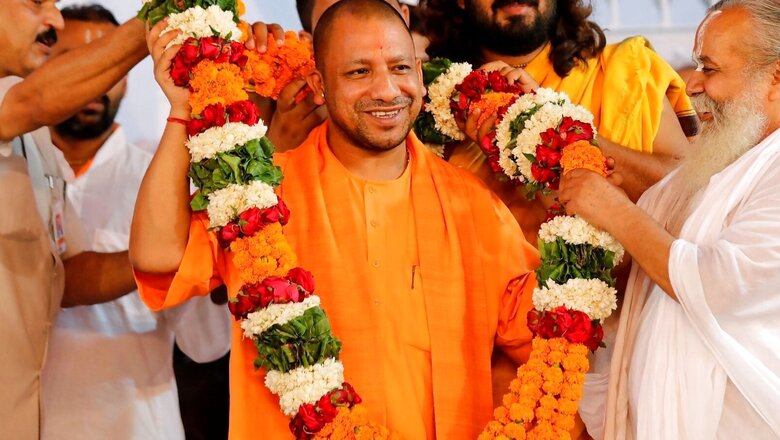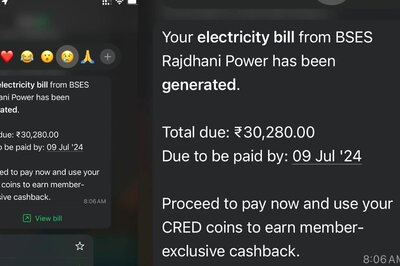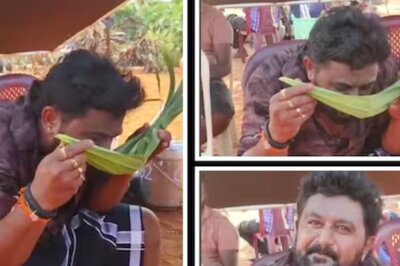Will 'Brand Yogi' Spell Magic for BJP? Saffron Party Walks the Line Between Hindutva, Caste Politics

views
When the BJP stormed to power in Uttar Pradesh after the 2017 assembly elections with a massive mandate of over 300 seats, the victory was also seen as a culmination of the saffron party’s long-term effort for harmony between Hindutva and caste politics. This was the BJP’s masterstroke in the 2014 Lok Sabha elections, and the mandate in the 2019 general polls was only more icing on the cake.
With the results of the 2019 Lok Sabha polls, the BJP was once again successful in humiliating the grand alliance of the Samajwadi Party and the Bahujan Samaj Party. In the run-up to 2022 assembly elections, however, it looks as if the BJP’s efforts to accommodate caste fault lines under a broader Hindutva umbrella is under threat.
So far, 11 OBC legislators, including three ministers, have quit the BJP. Their grouse is more with chief minister Yogi Adityanath than the party’s top brass. With murmurs of discontent in the OBC community as well as among Brahmins, five years of ‘Brand Yogi’ seems to have stirred the caste cauldron in UP.
2014 to 2017: BJP masters the balancing act
For years, the BJP struggled with caste politics in UP. Hindutva and the idea of cultural nationalism were often stumped by politics emerging from the issues faced by backward caste and Dalit communities.
BJP’s bid to balance between its Hindutva-based ideology and caste dynamics began in the mid-1980s. Back then, UP was also becoming a cradle of Hindutva politics with the RSS-BJP led Ram Janmabhoomi movement gaining pace. The concept of Hindutva, which envisioned unity of diverse castes under a larger banner of religious consciousness, saw initial success in 1991 when the BJP stormed to power with a clear majority. For the moment, Hindutva had overridden caste dynamics.
The Mandal commission report had just been implemented and the BSP’s Dalit movement was still building momentum. The RSS sensed the dangers put forth by a new wave of caste consciousness.
The decision to bring Kalyan Singh, a prominent OBC Lodhi face, as the UP CM was seen as part of a long-term strategy to fine-tune caste contradictions. Even as rival upper caste leaders in the BJP jostled for the top job, the RSS stood behind Kalyan calling him a “natural leader”.
With the demolition of the Babri Masjid in December 1992, however, the frenzy around the Ayodhya movement lessened. It was also a period of rising Mandal politics and resurgence of Dalit-based BSP. The BJP was, once again, at the crossroads.
From then on, for almost the next two decades, the BJP struggled to balance Hindutva and caste politics. While it did come to power in between, the larger politics was about the dominance of BSP and SP. But a decisive change came for the BJP with the beginning of the Narendra Modi era ahead of the 2014 elections.
The then Gujarat CM, Modi was suddenly in the spotlight. With this, there was a change in the party’s game plan in UP. Modi’s promise of Achhe Din was also supplemented by the projection of his OBC background. From top to bottom, the BJP went in for a transformation with representation to different castes. Ahead of the 2017 assembly polls, the BJP brought in the then Phulpur MP Keshav Prasad Maurya as the state president. This was seen as an outreach to non-Yadav OBCs.
The Yogi experiment
The caste outreach thus achieved success in the 2017 assembly elections. The BJP’s landslide victory with 40 per cent of the total votes polled was attributed to a strong combination of upper castes, non-yadav OBCs and non-Jatav Dalit Hindus.
The victory was soon followed by a surprise pick in the then Gorakhpur MP Yogi Adityanath for the post of chief minister. This, even after Keshav Prasad openly lobbied for the top job.
Five years down the line, ‘Brand Yogi’ seems to have grown alongside ‘Brand Modi’. Even as Prime Minister Narendra Modi used the moniker “UP-YOGI” for the UP CM, the ‘Yogi factor’ has come with its own set of advantages for the opposition.
The estimated 20 per cent minority population seems to have cemented itself against the staunch Hindutva and “strongarm” image of Adityanath. The breach in the vote to opposition parties SP, BSP and Congress, which has helped the BJP in the past, may not be a possibility now with the consolidation of the Muslim-Yadav base of the Samajwadi party.
Similarly, the perception of upper caste dominance, especially that of Kshatriyas, has also been a narrative that the party has tried to fight in the last five years. Now, with 11 OBC MLAs, including former ministers and well-known faces Swami Prasad Maurya, Dara Singh Chauhan and Dharam Singh Saini, resigning, the issue of OBC discontent has come to the fore.
After his resignation, Chauhan told News18, “All through the five years, elected representatives were often humiliated by police and officers. It was because of this that a large group of BJP MLAs sat on a dharna on the floor of Vidhan Sabha in 2019.”
Can CM Yogi make it?
A probable breach in the caste base can well be the reason behind the BJP playing the Hindutva card. With Ayodhya already in the discourse, there is also a debate around Kashi and Mathura. Adityanath, too, tried giving the election a clear “majority versus minority” spin by claiming that the election is of “80% versus 20%”.
The fact, however, remains that even with massive support in 2017, it is the 60 per cent coalition of upper castes, non-Yadav OBCs and non-Jatav Dalits that made the BJP tick. In its ‘Kamandal’ policy, the synthesis of Hindutva and Mandal politics, it was the Mandal that worked for the BJP in the previous election. In a state where OBCs are estimated to be around 50 per cent of the population, the backward castes are likely to play a decisive role again.
Even though the BJP still has a strong battery of OBC and Dalit leaderships, with the biggest projection being PM Modi himself, it remains to be seen if ‘Brand Yogi’ can work its magic again.
Read all the Latest Politics News here



















Comments
0 comment